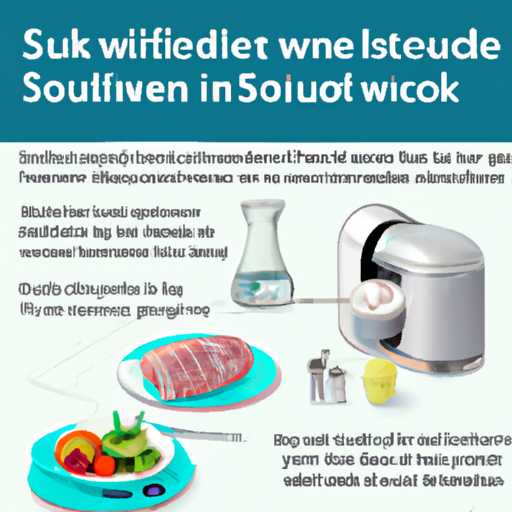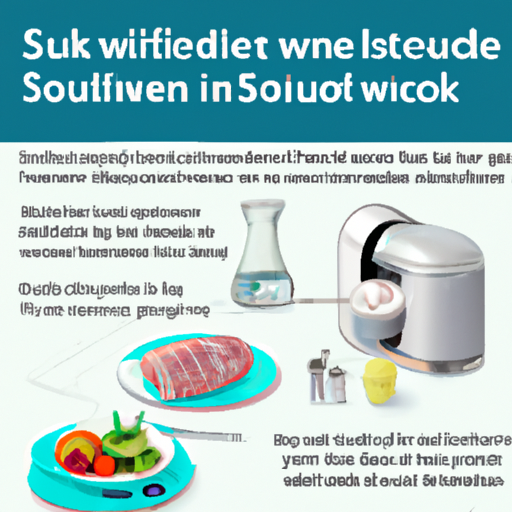What Is A Sous-vide Machine And How Does It Work
You’re in for a treat as we unravel the mystery of sous-vide machines and how they work. Have you ever wondered how professional chefs achieve perfectly cooked meats and vegetables, with flavors that are unmatched? Well, look no further – a sous-vide machine is the secret behind this culinary magic. This article will explain what a sous-vide machine is and give you a step-by-step breakdown of how it works its wonders in the kitchen. Get ready to elevate your cooking game to a whole new level!

This image is property of images.unsplash.com.
Understanding the Sous-vide Machine
Definition of a sous-vide machine
A sous-vide machine is a kitchen appliance that uses precise temperature control and a water bath to cook food in a vacuum-sealed bag. The term “sous-vide” comes from the French words “sous” meaning under, and “vide” meaning vacuum, indicating the cooking method of sealing the food in a bag and cooking it in a water bath. This method allows for precise control over cooking temperature, resulting in evenly cooked and flavorful dishes.
Origin and historical development
The sous-vide cooking technique originated in France in the 1970s, primarily in gourmet restaurants. It was initially used to cook delicate seafood and proteins to perfection. However, the technique gained wider recognition in the culinary world in the 1990s when chefs started experimenting with different cooking times and temperatures. Over the years, sous-vide cooking has evolved to be more accessible to home cooks through the development of sous-vide machines.
Different types of sous-vide machines
There are two main types of sous-vide machines: immersion circulators and water ovens. Immersion circulators are handheld devices that clip onto any pot or container filled with water, while water ovens have a built-in water bath. Both types offer precise temperature control, but immersion circulators are more versatile and easier to store due to their compact size. Some manufacturers also offer sous-vide attachments that can be used with pressure cookers or slow cookers, providing additional options for those who already own these appliances.
Components and Design of a Sous-vide Machine
Key machine parts
A typical sous-vide machine consists of several key components. These include a heating element, a water pump, a temperature sensor, a control panel or interface, and a clamp or holder to secure the machine to the cooking vessel. The heating element raises the temperature of the water bath, while the water pump circulates the water to ensure even heat distribution. The temperature sensor constantly monitors the water temperature, allowing the machine to make adjustments to maintain the desired cooking temperature. The control panel or interface allows the user to set the temperature and cooking time easily. The clamp or holder secures the machine to the cooking vessel, keeping it stable during the cooking process.
Explaining the design and aesthetics
Sous-vide machines are designed to be user-friendly and efficient. They typically have a sleek and compact design, taking up minimal counter space. The control panel or interface is often intuitive, with clear buttons or a touchscreen display for easy navigation and temperature adjustment. The machines are also designed with safety features, such as automatic shut-off when the water level is too low. The aesthetic design varies by manufacturer, with some machines featuring a modern and minimalist look, while others may have a more traditional or industrial appearance.
Variations in design by different manufacturers
Different manufacturers may have variations in the design and features of their sous-vide machines. Some may offer additional accessories or attachments to enhance the cooking experience, such as racks or dividers to separate food items in the water bath. Others may have advanced connectivity options, allowing users to control the machine remotely through smartphone apps or integrate it with smart home systems. The material used for the machine’s exterior and the quality of construction may also differ between manufacturers, affecting durability and longevity.
The Science Behind Sous-vide Cooking
Basic principles of sous-vide cooking
The basic principle of sous-vide cooking is precise temperature control. By cooking food at a lower temperature than traditional methods, sous-vide ensures that the food is cooked evenly without overcooking or undercooking. This gentle cooking process retains the natural flavors, juices, and texture of the food, resulting in tender and succulent dishes. Sous-vide also allows for the infusion of flavors by marinating the food in the bag before cooking.
The role of temperature and time
Temperature and time are essential factors in sous-vide cooking. Each type of food has specific temperature and time requirements to achieve the desired results. Lower temperatures are used for delicate foods like fish and eggs, while higher temperatures are used for tougher cuts of meat. The cooking time depends on the thickness and density of the food. The longer the cooking time, the more tender the food becomes, but there is a limit beyond which the texture can become undesirably mushy.
How sous-vide enhances food quality
Sous-vide cooking enhances food quality by preserving its natural flavors, moisture, and tenderness. The vacuum-sealed bags prevent the loss of moisture and the escape of flavors during cooking. This results in food that is juicy, tender, and packed with flavor. Moreover, the even cooking temperature ensures that the food is cooked uniformly throughout, eliminating the risk of dry or undercooked spots. Sous-vide also reduces shrinkage in meats, as the collagen in connective tissues breaks down more slowly at lower temperatures, resulting in meat that is more succulent and less tough.
Understanding the Sous-vide Process
Preparation of food
The first step in using a sous-vide machine is to prepare the food. This includes seasoning or marinating the food and placing it in a vacuum-sealed bag. The food can be seasoned with herbs, spices, or marinades to enhance its flavor. It is important to ensure that the food is evenly seasoned and properly sealed in the bag to prevent any air or liquid from entering.
Sealing the food in a bag
Once the food is seasoned, it is sealed in a bag using either a vacuum sealer or a technique called water displacement. A vacuum sealer removes the air from the bag, creating a tight seal. Water displacement involves partially sealing the bag and slowly lowering it into a water bath, allowing the water to push out the remaining air before fully sealing the bag.
Setting the temperature and time
After the food is sealed in the bag, it is placed in the water bath of the sous-vide machine. The user sets the desired cooking temperature and time using the control panel or interface. The machine then heats the water bath to the specified temperature and maintains it throughout the cooking process. The cooking time varies depending on the type and thickness of the food.
Finishing the cooking process
Once the cooking time is complete, the food is removed from the water bath. For certain meats, such as steaks or chicken, a finishing step may be desired to create a golden crust or char on the exterior. This can be achieved by searing the food on a hot pan or grill for a short period, giving it a caramelized and visually appealing appearance. However, this step is optional and depends on personal preference.
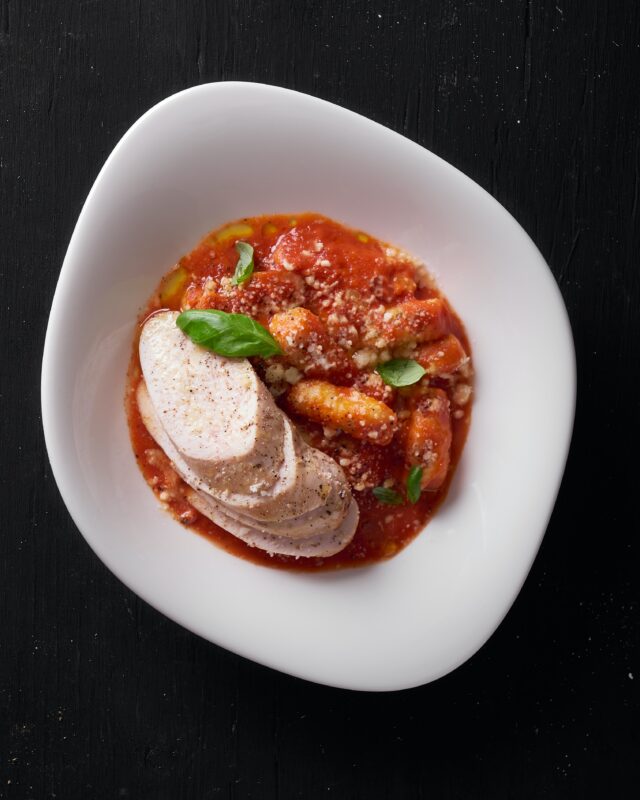
This image is property of images.unsplash.com.
Usage Scenarios of Sous-vide Machines
Use in professional kitchens
Sous-vide machines have become increasingly popular in professional kitchens due to their ability to consistently deliver high-quality dishes. Chefs can pre-cook large quantities of food, such as proteins or vegetables, and finish them to order, reducing the wait time for customers. The precise temperature control also allows chefs to experiment with different cooking times and temperatures, resulting in unique and innovative dishes.
Home use of sous-vide machines
In recent years, sous-vide machines have gained popularity among home cooks. They offer a convenient and foolproof way to achieve professional-quality results in the comfort of one’s own kitchen. Home cooks can experiment with recipes, cook food in advance for meal prep, or simply enjoy the ease of cooking difficult cuts of meat to perfection. Sous-vide machines are also ideal for hosting dinner parties, as they allow the host to focus on other tasks while the machine takes care of cooking.
Other scenarios – catering, food production
Sous-vide machines are not limited to professional kitchens and home use. They are also widely used in catering services and food production industries. The precise and consistent results offered by sous-vide cooking make it a preferred method for large-scale events and food production. The ability to cook large quantities of food in advance and finish to order is particularly beneficial in these scenarios, ensuring that the food is cooked to perfection and maintains its quality even after transportation or storage.
Benefits of Sous-vide Cooking
Food quality and taste improvement
One of the primary benefits of sous-vide cooking is the significant improvement in food quality and taste. The gentle cooking process preserves the natural flavors, tenderness, and moisture of the food, resulting in dishes that are flavorful and succulent. Sous-vide cooking allows for precise control over the desired doneness, ensuring that the food is cooked to perfection every time. The sealed bags also lock in the flavors, resulting in a more intense and concentrated taste.
Consistency in cooking outcomes
Another advantage of using a sous-vide machine is the consistency it brings to cooking outcomes. Since the temperature is controlled with precision, there is minimal risk of overcooking or undercooking the food. This eliminates the guesswork and allows for more consistent results, even for novice cooks. Whether it’s a steak, fish, or vegetables, sous-vide cooking consistently delivers evenly cooked and tender dishes.
Ease of use and convenience
Sous-vide machines are designed for ease of use and convenience, making them suitable for both professional and home cooks. The machines have intuitive control panels or interfaces that allow users to easily set the desired cooking temperature and time. Once the food is sealed in the bag and placed in the water bath, the machine takes care of the rest. There is no need for constant monitoring or stirring, allowing the cook to focus on other tasks. Sous-vide machines also provide flexibility, as food can be cooked in advance and kept warm until ready to serve.
Health and nutritional advantages
Sous-vide cooking offers health and nutritional advantages compared to traditional cooking methods. The lower cooking temperatures help preserve the nutrients in the food, especially heat-sensitive vitamins and antioxidants. The sealed bags prevent the loss of moisture and the need for additional fats or oils, resulting in healthier and leaner dishes. Additionally, sous-vide cooking reduces the formation of potentially harmful compounds like acrylamide, which can form in foods cooked at high temperatures.
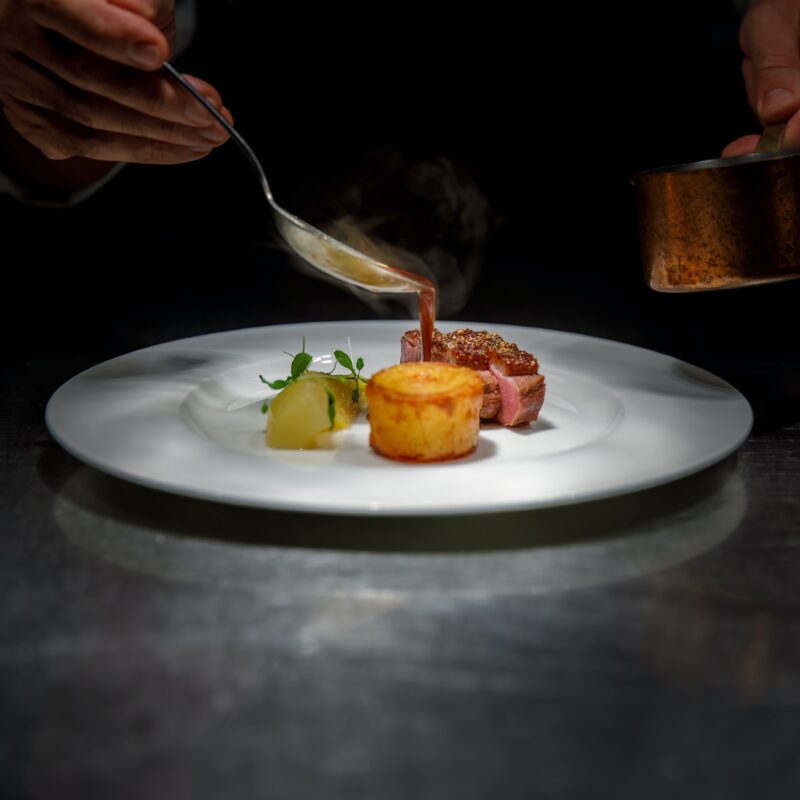
This image is property of images.unsplash.com.
Potential Drawbacks of Using Sous-vide Machines
Cost considerations
One potential drawback of using sous-vide machines is the cost. Compared to traditional cooking methods, sous-vide machines can be more expensive due to their specialized technology and features. However, prices have become more affordable over time, and there are options available for a range of budgets. It is essential to consider the cost in relation to one’s cooking needs and preferences, as well as the potential long-term savings in terms of food quality and reduced waste.
Learning curve for beginners
Another potential drawback for beginners is the learning curve associated with sous-vide cooking. While the machines are designed to be user-friendly, understanding the optimal cooking temperatures and times for different foods can take some experimentation. It may require trial and error to achieve the desired results and become comfortable with the technique. However, many sous-vide recipes and resources are available online, making it easier to learn and adapt to sous-vide cooking techniques.
Possible risks and safety concerns
Sous-vide cooking involves cooking food at low temperatures for an extended period, which can pose some risks if not done correctly. It is crucial to ensure that the food reaches the minimum safe internal temperature to eliminate any harmful bacteria or pathogens. Proper food handling and hygiene practices are essential to prevent the risk of foodborne illnesses. It is also important to use high-quality vacuum-sealed bags that are safe for cooking, as the plastic can release harmful chemicals if not suitable for high temperatures.
Buying a Sous-vide Machine: What to consider
Considering the price range
When buying a sous-vide machine, it is important to consider the price range that fits within your budget. Sous-vide machines vary in price, depending on the brand, features, and functionality. It is essential to determine your cooking needs and preferences to find a machine that offers the right balance of quality and affordability. It is also worth considering the long-term savings in terms of improved food quality and reduced waste that a higher-end machine can provide.
Understanding product features
Product features are an important consideration when choosing a sous-vide machine. Key features to look for include temperature range, water circulation capability, heating power, and programmability. The wider the temperature range, the more versatile the machine is for cooking a variety of foods. Strong water circulation ensures uniform heat distribution, while higher heating power reduces the time required to reach the desired temperature. Programmability allows for pre-setting cooking times and temperatures, making it convenient for meal planning and multitasking.
Looking at brand reputation and reviews
Brand reputation and reviews are valuable sources of information when buying a sous-vide machine. Research the reputation and track record of the brand, including customer reviews and ratings. Consider the opinion and experiences of others who have used the product to get an idea of its quality, reliability, and customer support. It is also helpful to seek recommendations from friends, chefs, or culinary professionals who may have firsthand experience with different sous-vide machines.
Deciding based on personal needs and preferences
Ultimately, choosing a sous-vide machine should be based on your personal needs and preferences. Consider the type and quantity of food you plan to cook, the frequency of use, and the level of control and automation you desire. Some machines offer advanced features and connectivity options, which may be appealing to tech-savvy cooks. Others prioritize simplicity and ease of use, focusing on the cooking essentials. Assess your cooking style and requirements to make an informed decision that suits your specific needs.
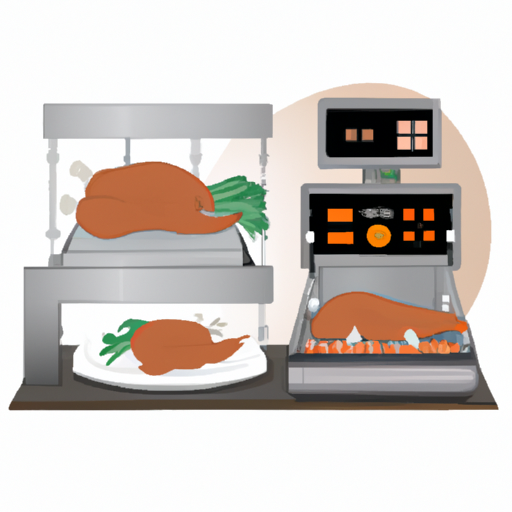
Maintenance and Care of Sous-vide Machines
Routine cleaning and checks
Proper maintenance and care are essential to ensure the longevity and optimal performance of a sous-vide machine. After each use, thoroughly clean the machine, including the water bath, to remove any food residue or debris. Use mild dish soap and a soft cloth or sponge, and avoid abrasive cleaning materials that may damage the machine’s surface. Regularly check the machine’s components, such as the heating element and water pump, for any signs of wear or damage and replace them as necessary.
Troubleshooting common issues
If you encounter any issues with your sous-vide machine, it is helpful to know how to troubleshoot common problems. Common issues may include inaccurate temperature readings, water circulation problems, or issues with the control panel. Refer to the machine’s user manual for specific troubleshooting steps or contact the manufacturer’s customer support for assistance. It is important to follow proper troubleshooting procedures and avoid attempting any repairs or modifications if you are not familiar with the machine’s internal components.
Lifespan of a sous-vide machine
The lifespan of a sous-vide machine can vary depending on the brand, quality, and usage. Warranties provided by manufacturers can be an indication of the machine’s expected lifespan, as reputable brands often offer longer warranties to instill confidence in their products. Proper maintenance and care, including regular cleaning, can help prolong the lifespan of a sous-vide machine. However, if the machine starts to show signs of significant wear or malfunction, it may be necessary to consider replacing or repairing it.
Getting professional help for repairs
In the event that a sous-vide machine requires repairs, it is recommended to seek professional help. Attempting to repair the machine yourself without proper knowledge and expertise can potentially damage the machine or pose safety risks. Contact the manufacturer’s customer support or a certified repair service to diagnose and fix the issue. If the machine is still under warranty, consult the manufacturer for instructions on warranty claims or repairs covered under the warranty terms.
Future of Sous-vide Machines and Cooking
Emerging trends in sous-vide cooking
Sous-vide cooking continues to evolve and adapt to emerging trends in the culinary world. One emerging trend is the use of sous-vide machines with advanced connectivity features, allowing users to control and monitor the cooking process remotely through smartphone apps. This offers flexibility and convenience, as users can interact with the machine from anywhere in their homes or even when away. Another trend is the development of sustainable packaging options for sous-vide cooking, such as biodegradable or reusable bags, to reduce plastic waste.
Innovations in sous-vide machine design
Innovations in sous-vide machine design are driving improvements in functionality, ease of use, and aesthetics. Manufacturers are constantly exploring new ways to enhance the user experience, such as intuitive touchscreens, voice control capabilities, and improved connectivity. There is also a focus on designing machines that are easier to clean and maintain, with detachable components and dishwasher-safe parts. Compact and space-saving designs are becoming more prevalent, catering to individuals with limited kitchen space.
Predictions on future popularity and usage
The popularity and usage of sous-vide machines are expected to continue to grow in the future. As more home cooks discover the benefits of sous-vide cooking, the demand for affordable and user-friendly machines will likely increase. Advances in technology and design will drive the development of more compact and versatile sous-vide machines, making them more accessible to a wider audience. With a growing emphasis on healthy and high-quality cooking, sous-vide machines offer a reliable and efficient way to achieve consistent and flavorful results.
